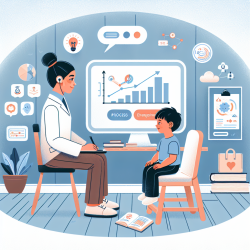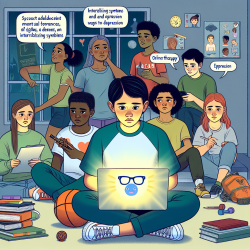Introduction
In the realm of speech-language pathology, understanding the intricate biological processes can often seem distant from our daily practice. However, the recent study titled "The ganglioside GM1a functions as a coreceptor/attachment factor for dengue virus during infection" offers insights that can indirectly influence our approach, especially when considering the broader context of child health and well-being.
Understanding the Research
The study, published in the Journal of Biological Chemistry, delves into the interaction between the dengue virus (DENV) and the ganglioside GM1a. GM1a is a glycosphingolipid found on the surface of mammalian cells, playing a crucial role in cell signaling and adhesion. The research reveals that GM1a acts as a coreceptor, significantly enhancing the infectivity of DENV1 and DENV2 serotypes in mammalian systems.
Using advanced techniques like fluorescence correlation spectroscopy and hydrogen/deuterium exchange mass spectrometry, the study demonstrates how GM1a interacts with specific domains of the DENV envelope protein. This interaction not only increases the virus's infectivity but also alters its movement on the cell surface, potentially facilitating quicker entry into host cells.
Implications for Practitioners
While the direct application of this research in speech-language pathology might not be immediately apparent, the implications for child health are significant. Dengue fever, caused by DENV, is a major global health issue, affecting millions, including children. Understanding the mechanisms of infection can lead to better preventive measures and treatments, ultimately improving health outcomes for children.
For practitioners, this underscores the importance of interdisciplinary awareness. By staying informed about advancements in virology and other fields, we can better advocate for comprehensive health strategies that support the children we serve.
Encouraging Further Research
This study opens the door for further exploration into how viral infections can be mitigated through targeting specific cellular interactions. For those in the field of speech-language pathology, this could mean collaborating with researchers to explore the impacts of viral infections on communication disorders, particularly in children who have experienced severe illnesses like dengue fever.
Moreover, the insights gained from such studies can inform the development of educational materials and preventive strategies that can be integrated into school-based therapy programs, such as those provided by TinyEYE.
Conclusion
The research on GM1a and its role in dengue virus infection highlights the intricate dance between viruses and host cells. As practitioners dedicated to improving child outcomes, embracing a holistic view that includes understanding such biological processes can enhance our practice and advocacy efforts.
To read the original research paper, please follow this link: The ganglioside GM1a functions as a coreceptor/attachment factor for dengue virus during infection.










